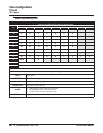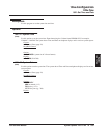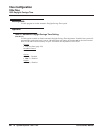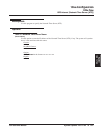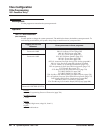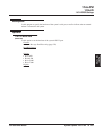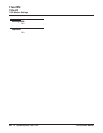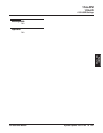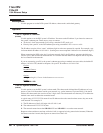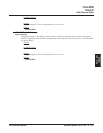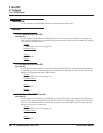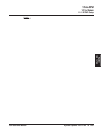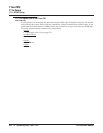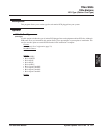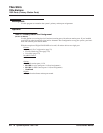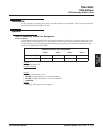
11xx-CPU
110x-I/O
1104-Ethernet Setup
606 ◆ System Options: 1001-1702 DSX Software Manual
1104-Ethernet Setup
Description
Use this program to set the DSX system’s IP address, subnet mask, and default gateway.
Options
1104-01: System IP Address
(IP Addr)
Use this option to set the DSX system’s IP address. You must set the IP address if you intend to connect to
the system’s ethernet port. There are two ways to connect:
❥ To the site’s local area network (LAN) using a standard CAT5 patch cord.
❥ Directly from your PC to the DSX ethernet port using a standard CAT5 crossover cable.
The IP address consists of four “octets” with three digits in each octet separated by a period. For example, a typ-
ical router default IP address is 192.168.1.1. (Leading zeros are not required if the octet is less than three digits.)
When connecting the DSX to the site’s local area network (LAN), the IP address you enter should be pro-
vided to you by the site network administrator. It is essential that the address not duplicate that of any other
device connected to the network.
If you are connecting your PC to the system’s ethernet port using a standard crossover cable, the default IP
address (192.168.1.250) should be adequate. Set your PC IP address to 192.168.1.249.
Features
• None
IntraMail Features
• None
Options
• Digits using 0-9, 12 max. in the format xxx.xxx.xxx.xxx
Default
• 192.168.1.250
1104-02: System Subnet Mask
(Subnet)
Use this option to set the DSX system’s subnet mask. The subnet mask distinguishes IP addresses of com-
puters on your LAN from those outside your network (e.g., on the internet or a private WAN). Like the IP
address, the subnet mask also consists of four 3-digit octets. The subnet mask uses the entry 255 to define the
masked octets and 0 to define the unmasked octets.
A typical entry of 255.255.255.0 means if two IP addresses have the same first three octets, they are on the
same network. For example, if:
1. The IP addresses of the LAN begin with 192.168.1, and
2. The subnet mask 255.255.255.0, then
3. The network routers know that 192.168.1.250 and 192.168.1.1 are on the same network.
Requests to these addresses are kept within the LAN (as opposed to being routed to the internet). When the
first three octets don’t match, the requests are routed out of the LAN.
Features
• None



